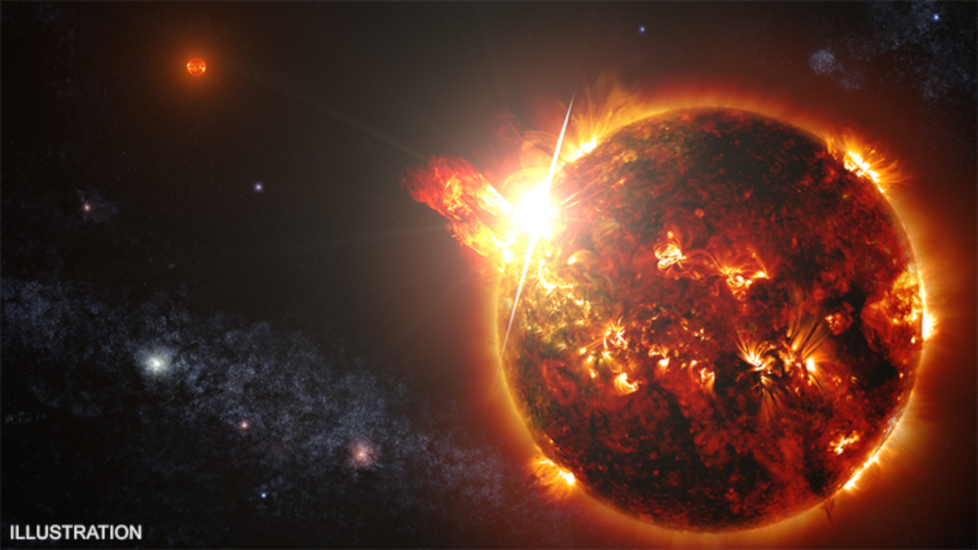
 Credit: NASA/CXC/INAF/Argiroffi, C. et al.
Illustration: NASA/GSFC/S. Wiessinger
Credit: NASA/CXC/INAF/Argiroffi, C. et al.
Illustration: NASA/GSFC/S. Wiessinger
Expelled
Our Sun not only gives light to the solar system, but also bits of itself as well. Strong flares originating on the solar surface can release the energy of the Sun's twisted magnetic field as an explosion of hot, fast moving clouds of cosmic particles. Astronomers call these clouds Coronal Mass Ejections, or CMEs for short. Such ejections can play an important role in the safety of the Solar system. CMEs can produce space weather storms which can have a damaging effect on exposed satellites (or astronauts) in orbit around earth. Exceedingly strong CMEs can play havoc communication networks. The most notorious example known was the famous Carrington Event of 1859, a solar storm that was strong enough to melt telegraph wires on earth (whether our modern, technologically based society could withstand another such blast is currently an open question). Over time, CMEs can also strip the atmosphere from a planet (fortunately for us, the earth's magnetic field helps shield our atmosphere). We know that most stars in our galaxy show much stronger flaring activity than the relatively modest activity currently shown by the Sun. But measuring the properties of CMEs produced by stellar flares is extremely difficult, since stars are so far away. A new study of a relatively bright, nearby star called HR 9024 provides what is to date the best measure of the properties of a CME associated with a strong stellar flare. Observations using the High Energy Tranmission Grating Spectrometer (HETGS) on the Chandra X-ray Observatory during a strong flare from HR 9024 showed significant changes in the motions of silicon, sulfur, and oxygen atoms ejected by the flare. These observations showed the hottest material first rising off the surface of the star at velocities of nearly a million kilometers per hour, then cooler material sinking back down towards the star, behavior characteristic of solar CMEs. The mass of the CME from HR 9024 is enormous - about 100 times the mass of Phobos, one of the moons of Mars. The image above is an illustration of the coronal mass ejection from HR 9024, based largely on observations of CMEs from the Sun.
Published: June 10, 2019
<
HEA Dictionary ● Archive
● Search HEAPOW
● Other Languages
● HEAPOW on Facebook
● Download all Images
● Education ● HEAD
>

Each week the HEASARC
brings you new, exciting and beautiful images from X-ray and Gamma ray
astronomy. Check back each week and be sure to check out the HEAPOW archive!
Last modified Tuesday, 27-Feb-2024 10:10:08 EST


